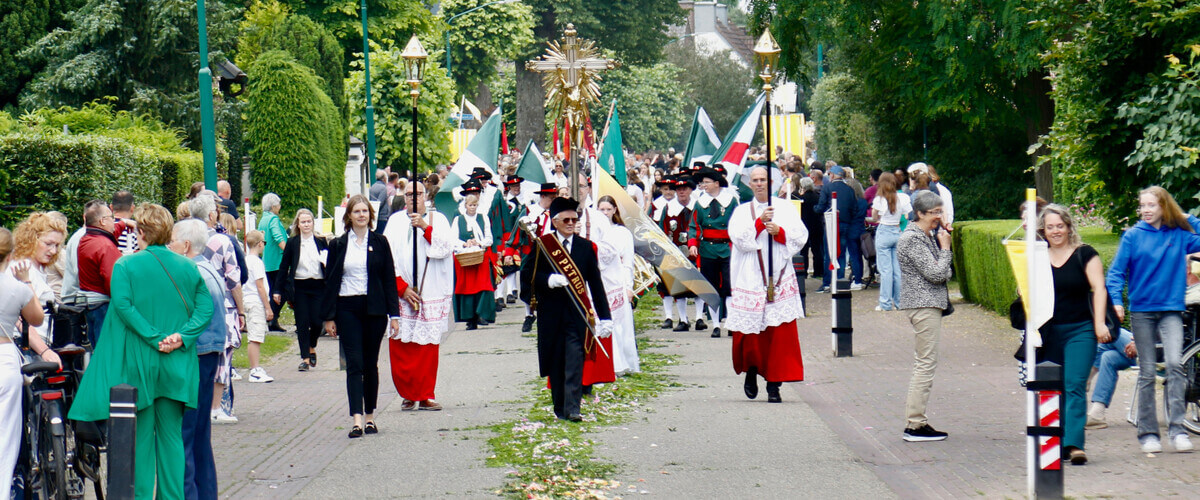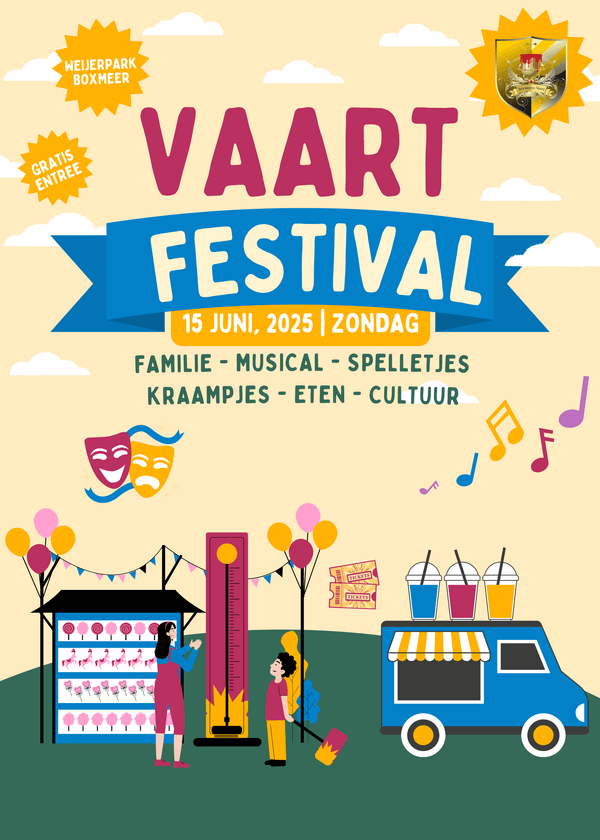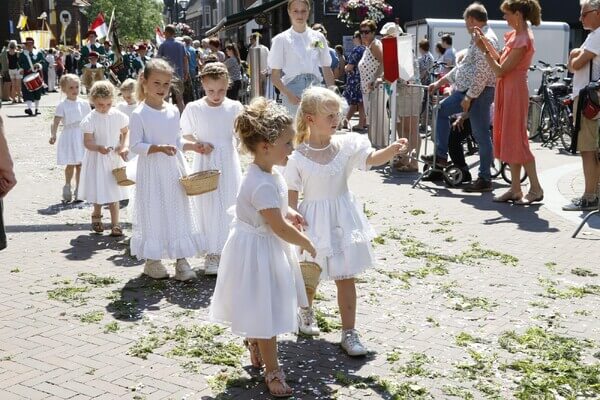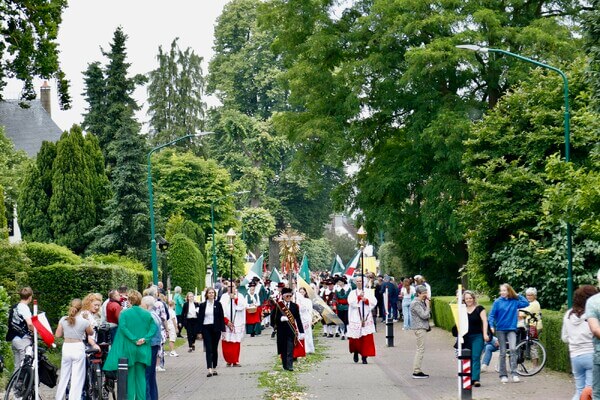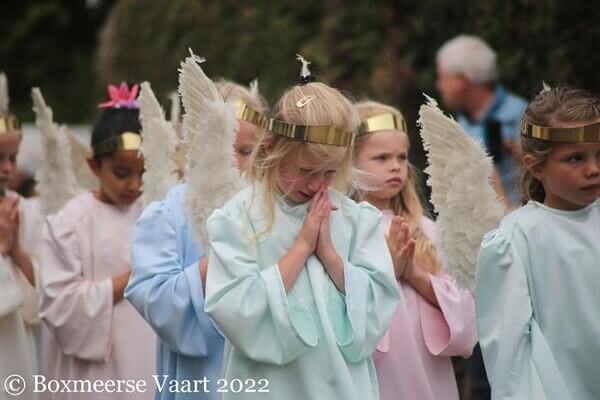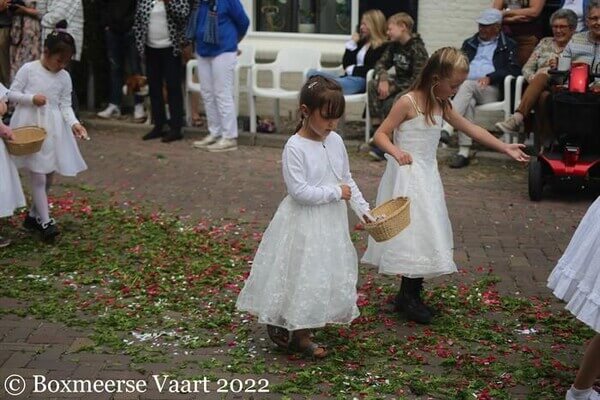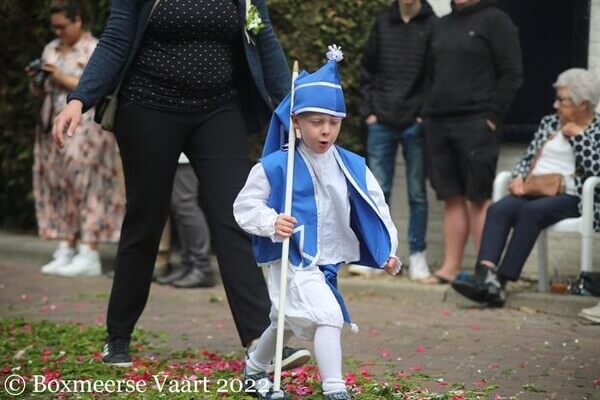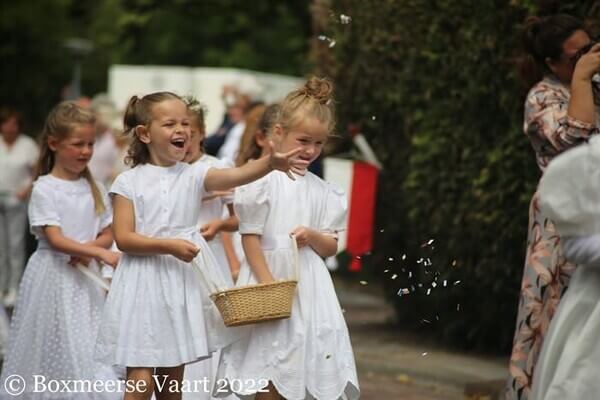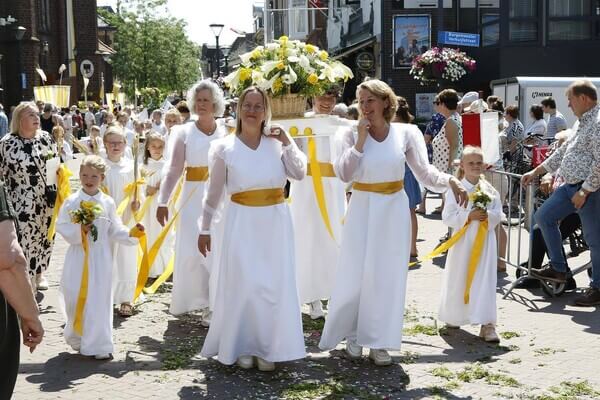Origin around the year 1400
The Boxmeerse Vaart is a colourful (children's) procession that annually passes through the streets of Boxmeer. The saying goes: Pentecost early, Pentecost late: fourteen days later the Boxmeerse Vaart passes. The centrepiece of the Vaart is the large group around the relic of the Holy Blood. The Vaart originated around the year 1400.
Tradition tells that a priest doubted the conversion of bread and wine into the body and blood of Christ. The blood bubbled over the chalice and a drop remained on the corporal (white cloth) after the priest acknowledged his mistake. This cloth has been preserved and stored in the silver reliquary and is still carried in the Boxmeerse Vaart to this day. After all these years, the Holy Blood Procession in Boxmeer is still very much alive. Although the devotion has decreased, the tradition is still celebrated every year.
